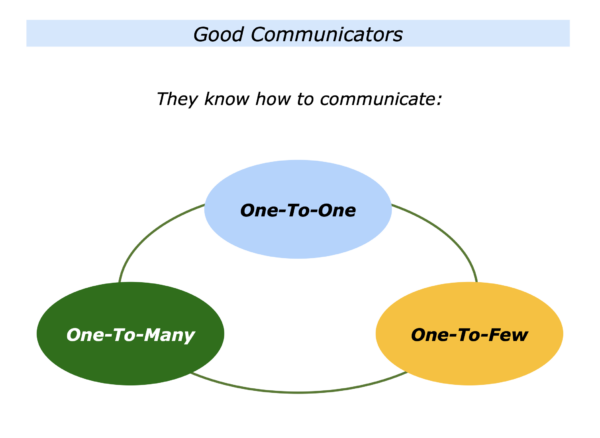
A person’s communication style can play a big part in making or breaking relationships. Later we will explore how to connect with people in one-to-one, one-to-few and one-to-many situations.
Before then, here is a short introduction to some of the principles followed by good communicators. They sometimes focus on the following themes.
Clarity
This involves clarifying the real results they want to achieve and rehearsing how they can do they best to get these results when communicating with people.
Communication
This involves creating a positive environment and communicating in a way that is most likely to achieve the desired results with people
Concrete Results
This involves following up after the session and behaving in a way that is most likely to achieve the desired results with people.
Good communicators aim to connect with people. They often start by building on what people have in common and clarifying the goals for the conversation.
Such people give and receive information, find creative solutions to challenges and make clear contracts about the future. They ensure that everybody moves forward towards a shared picture of success.
One Key Point To Remember
Good communicators often give others the chance: a) to reflect on what has been communicated; b) to play back their understanding of what the communicator has said or asked them to do; c) to ask any questions for information or regarding the next steps.
This is vital. It can lay the ground for making clear contracts about what needs to be done – and by whom – on the road to achieving the desired picture of success.
Poor communicators are often more concerned with what they want to say rather than with the results to achieve from the conversation. This means they may not be fully present. They may miss cues and find it difficult to achieve mutual success.
Here is a short introduction to some of the principles followed by good communicators.
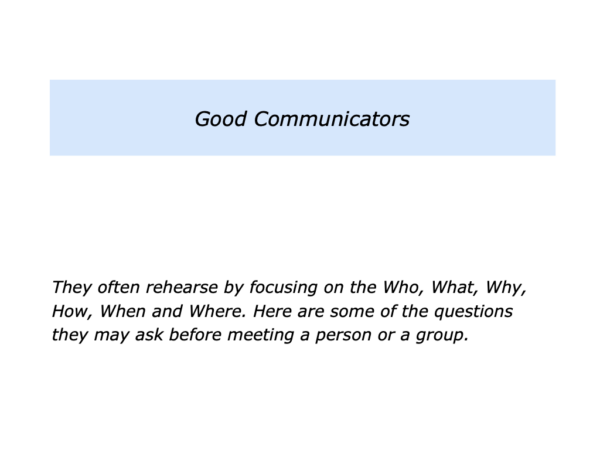
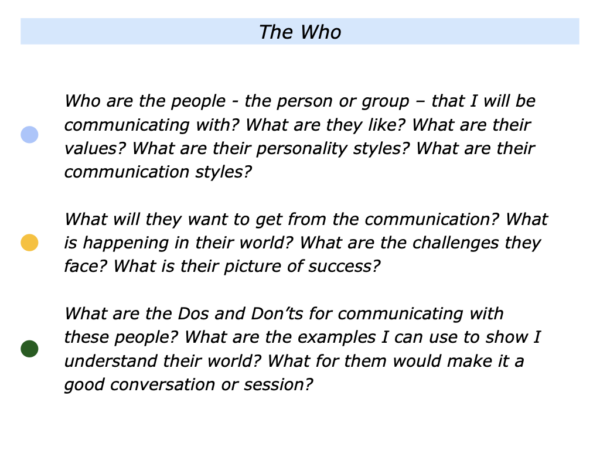
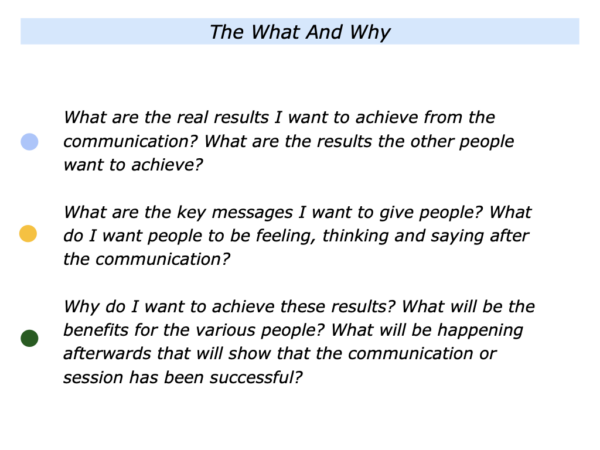
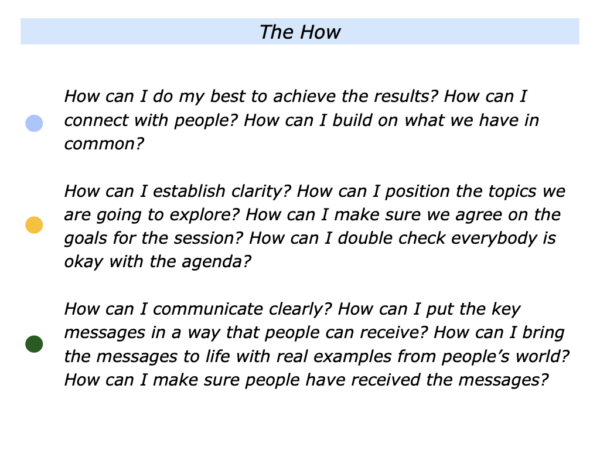
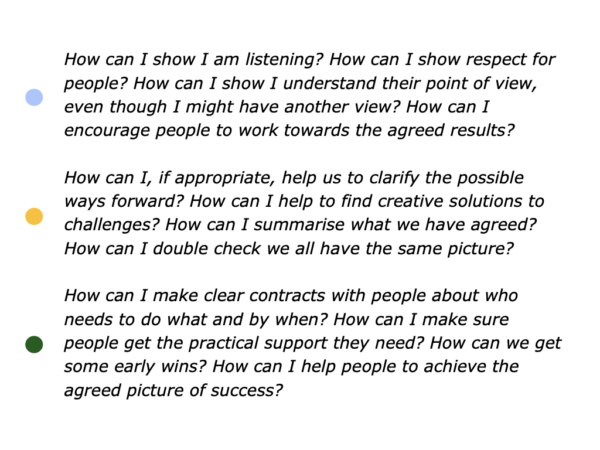
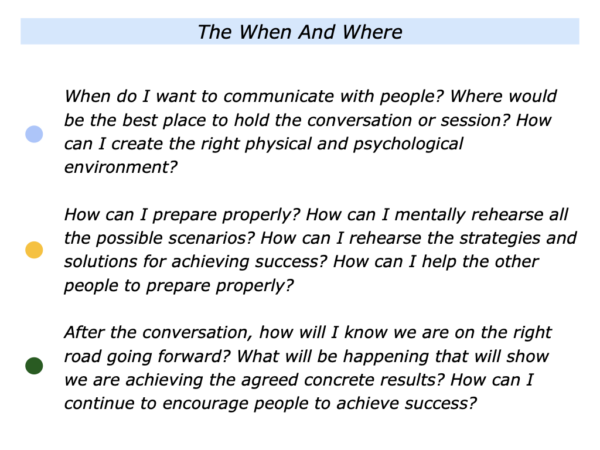
Communicating One-To-One
Imagine you are going to meet somebody in a one-to-one situation. You may be meeting a customer, a team member, your boss or whoever.
If you are the leader in the conversation – the one who has initiated it – you will probably ask some of the questions mentioned above. You will focus on:
Who is the person? What is their agenda? What are the results to achieve from the conversation? How can I do my best to achieve these results?
If you are the follower in the conversation – the one who has been asked to attend – you will probably ask similar questions. But you may also add: ‘How can I do my best to contribute and make it a positive conversation?’
If you wish, try tackling the exercise on this theme. This invites you to do the following things.
Describe the specific situation where you may want to communicate with somebody on a one-to-one basis.
Describe the real results you want to achieve from the communication in the situation.
Describe the specific things you can do to connect with the person, communicate clearly and achieve the desired results.
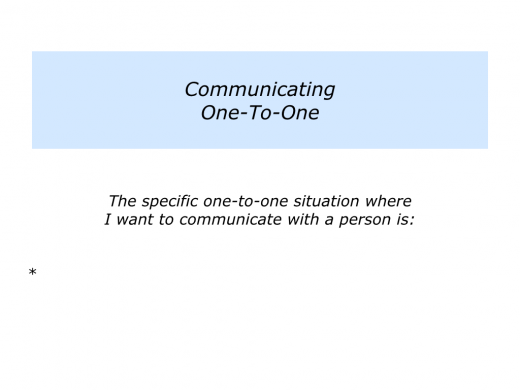
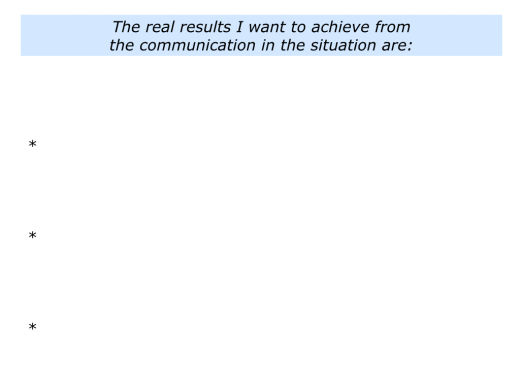
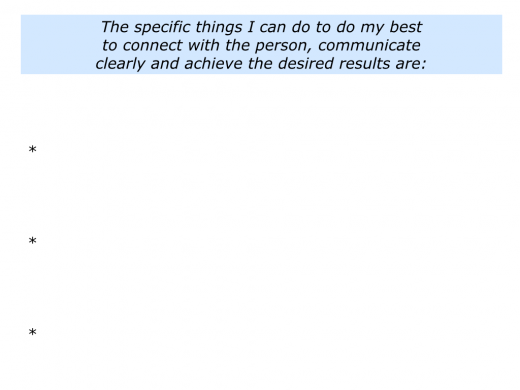
Communicating One-To-Few
Imagine you are going to meet people in a one-to-few situation. If you are the leader in the conversation, you may be conducting a team meeting, having a catch-up conversation with a small group or facilitating a workshop.
When meeting the people, it will be important:
To clarify the specific goals for the meeting;
To check if anybody would like to add other items to the agenda;
To begin exploring the first topic.
It may be useful to open up the first topic, explain your views, invite others to share their views, listen carefully and then, at an appropriate time, close down the topic.
Making a decision, you will ensure everybody is clear on the way forward. Moving onto the next topic, you will continue until the agenda is completed.
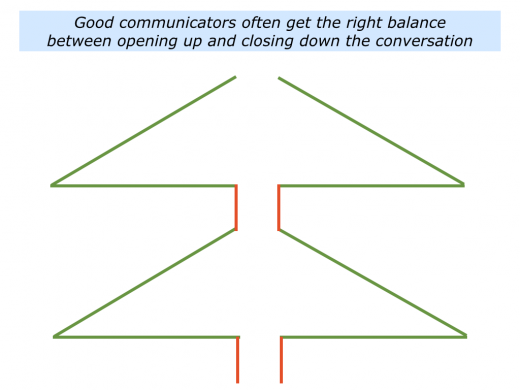
Sometimes you may play a different role in a group, such as when meeting with peers or simply contributing to a departmental meeting.
This is a situation that catches out some people, especially if they get bored. Whilst they may function well when leading a meeting, they lapse into unprofessional behaviour with peers.
Preparation is the key to participating in a group. You can choose:
To clarify the role you want to play and the contribution you want to make to the situation;
To anticipate everything that may happen in the situation;
To rehearse how you want to communicate and contribute to achieving a successful meeting.
You can then go in and do your best to make a positive contribution to the meeting.
If you wish, try tackling the exercise on this theme. This invites you to do the following things.
Describe the specific situation where you may want to communicate with people on a one-to-few basis.
Describe the real results you want to achieve from the communication in the situation.
Describe the specific things you can do to connect with the people, communicate clearly and achieve the desired results.
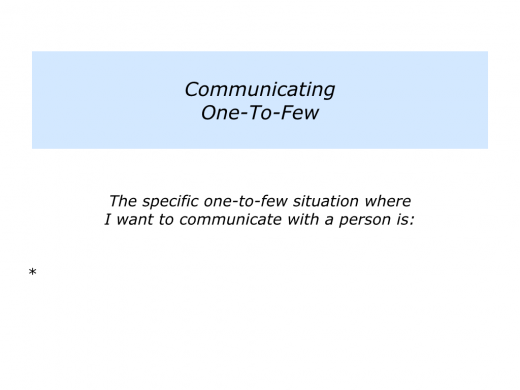
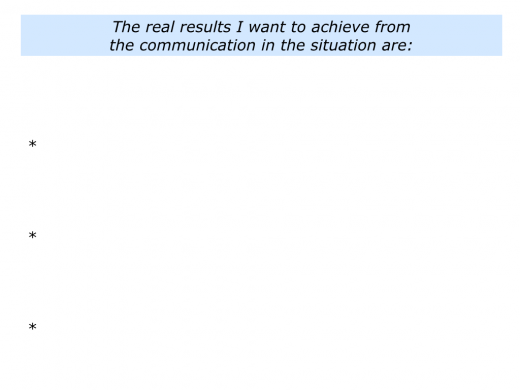
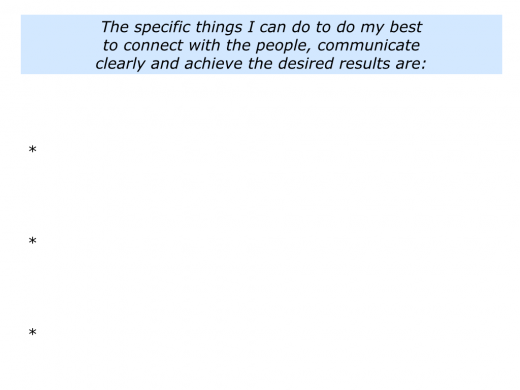
Communicating One-To-Many
Some people enjoy individual and small group meetings, but they feel uncomfortable talking to large group. Such individuals may like to see how people respond and also get into dialogue. This is more difficult in big groups where what they say may seem to disappear into the ether.
Good leaders develop the skills of communicating in one-to-many situations. This includes some of the following themes.
They aim to be themselves in the situation. They use their own voice, language and examples. They aim to be professional, but also express their personality.
They know their audience. They know the challenges these people face in their daily work and world.
They clarify the key messages they want to give people. They know how to communicate these messages in a way people can receive. They know how to bring the messages to life with examples.
They spend a lot of time preparing. They practice until they can forget. They go through the process of rehearsing, relaxing and then rising to the occasion.
They start the session by positioning what they are going to say. They often give the context – the bigger picture – before going on to give concrete examples. This helps people to see things in a wider context.
They give the key messages to people by moving between the concept and the concrete. They give an idea and then illustrate it with an example that people can recognise in their daily lives.
They conclude the session by outlining the next steps. They also, when appropriate, give people the chance to integrate and implement the ideas in their daily work and lives.
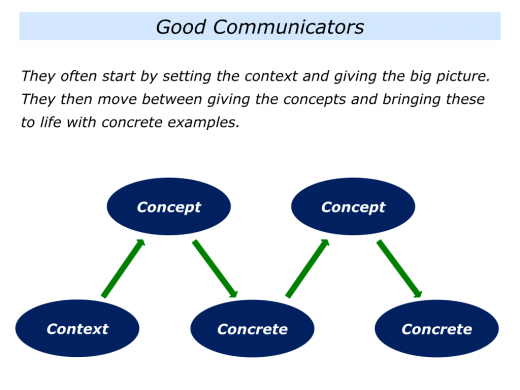
Some people are good communicators one-to-one, some one-to-few, some one-to-many. Whatever situation they enter, they can find it useful to prepare properly and then do their best to achieve the desired picture of success.
If you wish, try tackling the final exercise on this theme. This invites you to do the following things.
Describe the specific situation where you may want to communicate with people on a one-to-many basis.
Describe the real results you want to achieve from the communication in the situation.
Describe the specific things you can do to connect with the people, communicate clearly and achieve the desired results.
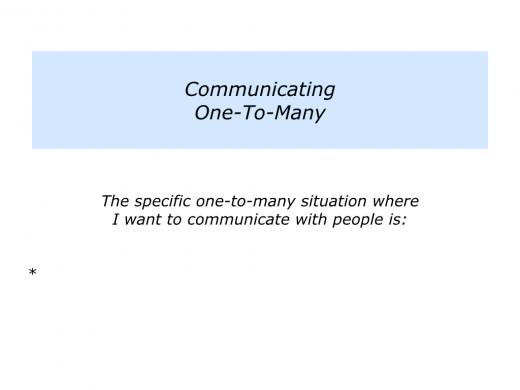
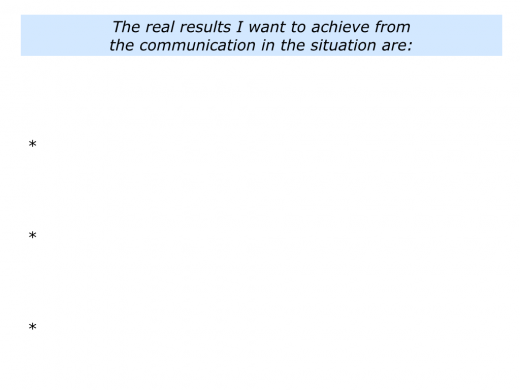
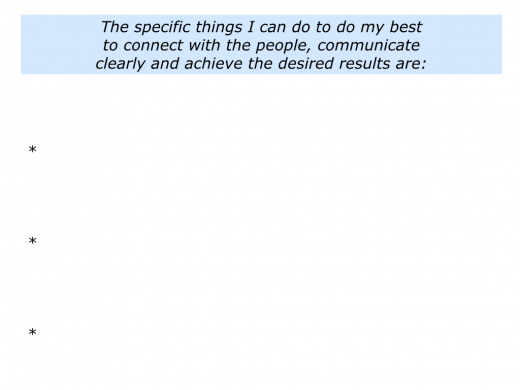


Leave a Reply